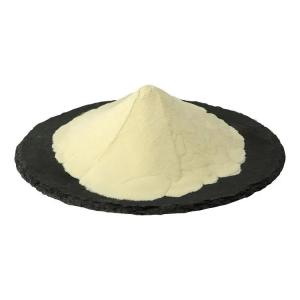News list
News Center
Hot Product
News
Phosphoric acid and food science communication
Time:2025-10-24
1. Introduction to Phosphoric Acid
Phosphoric acid (H₃PO₄) is a colorless, odorless, and moderately strong acid widely used in the food industry. It serves various purposes, such as acidifying agents, flavor enhancers, and stabilizers. Due to its versatility and controlled safety profile, phosphoric acid has become an essential additive in modern food production and processing.
2. Role in Food Processing
In the food industry, phosphoric acid helps regulate acidity levels to maintain the desired taste and texture of products. It is often added to beverages, including soft drinks, to provide a tangy flavor. Additionally, it is used in the production of processed foods, dairy products, and jams to ensure consistent quality and extended shelf stability.
3. Applications in Food Manufacturing
Phosphoric acid plays a role in several manufacturing processes:
Flavor Adjustment: Enhances tartness and balances sweetness in beverages.
Preservation: Helps maintain product freshness and prevents microbial growth in certain formulations.
Texture Control: Used in cheese and dairy products to regulate pH and improve consistency.
Leavening Agent Component: Contributes to the action of baking powders in bakery goods.
4. Communication in Food Science
Effective communication about phosphoric acid in food science involves sharing accurate information regarding its origin, properties, and safe usage levels. Food scientists, nutritionists, and manufacturers play key roles in ensuring consumers understand its technological purpose rather than associating it with misconceptions. Transparent labeling and educational outreach strengthen public trust and promote responsible consumption.
5. Quality and Safety Management
In food production, phosphoric acid must comply with regulatory standards set by organizations such as the FDA, EFSA, and Codex Alimentarius. These standards define purity requirements and acceptable daily intake levels to ensure consumer safety. Regular quality monitoring and analytical testing guarantee that the acid used in foods meets industrial-grade or food-grade specifications.
6. Conclusion
Phosphoric acid continues to be a vital component in food science due to its multifunctional properties and controlled safety profile. Through clear communication and responsible application, the food industry can maintain consumer confidence while benefiting from the practical uses of this widely applied ingredient.
Phosphoric acid (H₃PO₄) is a colorless, odorless, and moderately strong acid widely used in the food industry. It serves various purposes, such as acidifying agents, flavor enhancers, and stabilizers. Due to its versatility and controlled safety profile, phosphoric acid has become an essential additive in modern food production and processing.
2. Role in Food Processing
In the food industry, phosphoric acid helps regulate acidity levels to maintain the desired taste and texture of products. It is often added to beverages, including soft drinks, to provide a tangy flavor. Additionally, it is used in the production of processed foods, dairy products, and jams to ensure consistent quality and extended shelf stability.
3. Applications in Food Manufacturing
Phosphoric acid plays a role in several manufacturing processes:
Flavor Adjustment: Enhances tartness and balances sweetness in beverages.
Preservation: Helps maintain product freshness and prevents microbial growth in certain formulations.
Texture Control: Used in cheese and dairy products to regulate pH and improve consistency.
Leavening Agent Component: Contributes to the action of baking powders in bakery goods.
4. Communication in Food Science
Effective communication about phosphoric acid in food science involves sharing accurate information regarding its origin, properties, and safe usage levels. Food scientists, nutritionists, and manufacturers play key roles in ensuring consumers understand its technological purpose rather than associating it with misconceptions. Transparent labeling and educational outreach strengthen public trust and promote responsible consumption.
5. Quality and Safety Management
In food production, phosphoric acid must comply with regulatory standards set by organizations such as the FDA, EFSA, and Codex Alimentarius. These standards define purity requirements and acceptable daily intake levels to ensure consumer safety. Regular quality monitoring and analytical testing guarantee that the acid used in foods meets industrial-grade or food-grade specifications.
6. Conclusion
Phosphoric acid continues to be a vital component in food science due to its multifunctional properties and controlled safety profile. Through clear communication and responsible application, the food industry can maintain consumer confidence while benefiting from the practical uses of this widely applied ingredient.


 CN
CN





